Single-party state
| This article is part of the Politics series |
| Party politics |
| Political spectrum |
| Left-right politics Left-wing · Right-wing Syncretic |
| Party platform (manifesto) |
| Party system |
| Dominant-party Multi-party Non-partisan Single-party Two-party |
| Lists |
| Ideologies Parties by ideology Parties by country Parties by UN geoscheme |
| Politics portal |
A single-party state, one-party system or single-party system is a type of party system government in which a single political party forms the government and no other parties are permitted to run candidates for election. Sometimes the term de facto single-party state is used to describe a dominant-party system where unfair laws or practices prevent the opposition from legally getting power. Some single party states only outlaw opposition parties, while allowing subordinate allied parties to exist as part of a permanent coalition such as a popular front. Within their own countries, dominant parties ruling over single-party states are often referred to simply as the Party. For example, in reference to the Soviet Union, the Party meant the Communist Party of the Soviet Union; in reference to the former People's Republic of Poland it referred to the Polish United Workers' Party.
A one-party system should not be confused with a non-partisan democracy which prohibits all political parties. Also, some one-party states may allow non-party members to run for legislative seats, as was the case with Taiwan's Tangwai movement in the 1970s and 1980s.
In most cases, single-party states have arisen from Leninist, fascist or nationalist ideologies, particularly in the wake of independence from colonial rule. One-party systems often arise from decolonization because one party has had an overwhelmingly dominant role in liberation or in independence struggles.
Where the ruling party subscribes to a form of Marxism-Leninism, the one-party state system is usually called a communist state, though such states do not use that term to describe themselves, adopting instead the title of people's republic, socialist republic or democratic republic. One peculiar example is Cuba, where the role of the Communist Party is enshrined in the constitution, and no party is permitted to campaign or run candidates for election, including the Communist party. Candidates are elected on an individual referendum basis without formal party involvement, though elected assemblies predominantly consist of members of the dominant party alongside non-affiliated candidates.[1]
Contents |
Arguments for and against a single party-system
Supporters of a single-party state often appeal to a sense of unity, strength and commonality that a single-party government can lend a state. They argue that multi-party systems introduce too much division and are unsuitable for economic and political development. This argument was particularly popular during the mid-20th century, as many developing nations sought to emulate the Soviet Union, which had transformed itself from a backward, agrarian nation into a superpower.
Another advantage of a single-party state is the tendency to adopt long-term policies while multi-party states tend to favour short-termist policies for the benefit of periodic elections.
A common counter-argument is that one-party systems have a tendency to become rigid and unwilling to accept change, which renders them unable to deal with new situations and may result in their collapse. This counter-argument became more widely held as the 20th century drew to a close and the Soviet Union and the countries of the Warsaw Pact collapsed. Finally, one-party states have often been criticized for their disrespect towards human rights, however, this is more a reflection on the ideology of the party in power, rather than on the system itself.
Democracy, dictatorship and the single-party system
Some do not consider a single party system to be truly democratic. This is due, in part, to the perception that a single party represents a single choice for a voter, which is seen to be no choice at all. While this is often true it is not necessarily the case. For example, under Mussolini's National Fascist Party numerous candidates ran for election in each constituency, albeit under the Fascist Party.
Furthermore, the single-party system is heavily associated with dictatorship. As there is only one party, political power tends to be concentrated solely within the ruling party. As a result it is usually easy for the party in power to disregard previous laws or the constitution of the state, creating a dictatorship consisting of the party. Further contributing to the association of dictatorship and the single-party system is the fact that many dictatorships have adopted a single-party system. This may be a means of legitimizing the dictatorship under that nation's constitution, or to present a veneer of democracy to other democratic nations, or the ideology of the party may require that the dictatorship rule "by the will of the people".
Although many dictatorships represent themselves as one-party states, a one party-state is not a requirement of dictatorships. Examples of a dictatorship that is not a one-party state includes military dictatorships wherein the political power resides with the military, who exercise their authority without regard to political parties or elections.
Examples
The True Whig Party of Liberia is considered the founder of the first single-party state in the world. The party was conceived by the original Black American settlers and their descendants who referred to themselves as Americo-Liberians. Initially, its ideology was heavily influenced by that of the United States party of the same name. Over time it morphed into a powerful Masonic Order that ruled every aspect of Liberian society for well over a century until it was overthrown in 1980. While the True Whig Party still exists today, its influence has substantially declined.
Current single-party states
The following list includes the countries that are legally constituted as single-party states as of 2008 and the name of the single party in power:
 People's Republic of China (Communist Party of China) - excluding Hong Kong and Macau Special Administrative Regions where the Cheif Executive is appointed by the Central People's Government.
People's Republic of China (Communist Party of China) - excluding Hong Kong and Macau Special Administrative Regions where the Cheif Executive is appointed by the Central People's Government. Republic of Cuba (Communist Party of Cuba)
Republic of Cuba (Communist Party of Cuba) State of Eritrea (People's Front for Democracy and Justice)
State of Eritrea (People's Front for Democracy and Justice) Democratic People's Republic of Korea (Korean Workers' Party leads the Democratic Front for the Reunification of the Fatherland)
Democratic People's Republic of Korea (Korean Workers' Party leads the Democratic Front for the Reunification of the Fatherland)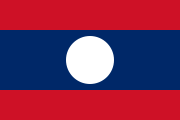 Lao People's Democratic Republic (Lao People's Revolutionary Party leads the Lao Front for National Construction)
Lao People's Democratic Republic (Lao People's Revolutionary Party leads the Lao Front for National Construction) Syrian Arab Republic (Baath Party leads the National Progressive Front)
Syrian Arab Republic (Baath Party leads the National Progressive Front) Socialist Republic of Vietnam (Communist Party of Vietnam leads the Vietnamese Fatherland Front)
Socialist Republic of Vietnam (Communist Party of Vietnam leads the Vietnamese Fatherland Front)
Former single-party states
| This article is part of the Politics series |
| Party politics |
| Political spectrum |
| Left-right politics Left-wing · Right-wing Syncretic |
| Party platform (manifesto) |
| Party system |
| Dominant-party Multi-party Non-partisan Single-party Two-party |
| Lists |
| Ideologies Parties by ideology Parties by country Parties by UN geoscheme |
| Politics portal |
Examples include:
- many governments in Sub-Saharan Africa after independence, although all except Eritrea have converted to a de jure multi-party system.
 Angola (Popular Movement for the Liberation of Angola-Labour Party) 1975-1991
Angola (Popular Movement for the Liberation of Angola-Labour Party) 1975-1991 Benin (People's Revolutionary Party of Benin) 1975-1990
Benin (People's Revolutionary Party of Benin) 1975-1990 Burundi (Union for National Progress) 1966-1993
Burundi (Union for National Progress) 1966-1993 Cameroon (Cameroon National Union 1966-1985/Cameroon People's Democratic Movement 1985-1990)
Cameroon (Cameroon National Union 1966-1985/Cameroon People's Democratic Movement 1985-1990) Cape Verde (African Party for the Independence of Guinea and Cape Verde 1975-1981/African Party for the Independence of Cape Verde 1981-1991)
Cape Verde (African Party for the Independence of Guinea and Cape Verde 1975-1981/African Party for the Independence of Cape Verde 1981-1991) Central African Republic (Movement for the Social Evolution of Black Africa) 1962-1979, (Central African Democratic Union) 1980-1981, (Central African Democratic Rally) 1985-1991
Central African Republic (Movement for the Social Evolution of Black Africa) 1962-1979, (Central African Democratic Union) 1980-1981, (Central African Democratic Rally) 1985-1991 Chad (Chadian Progressive Party 1962-1973/National Movement for the Cultural and Social Revolution 1973-1975), (National Union for Independence and Revolution) 1989-1990
Chad (Chadian Progressive Party 1962-1973/National Movement for the Cultural and Social Revolution 1973-1975), (National Union for Independence and Revolution) 1989-1990 Comoros (Comorian Union for Progress) 1982-1990
Comoros (Comorian Union for Progress) 1982-1990 Congo-Brazzaville (National Revolutionary Movement) 1964-1968, (Congolese Labour Party) 1969-1990
Congo-Brazzaville (National Revolutionary Movement) 1964-1968, (Congolese Labour Party) 1969-1990 Côte d'Ivoire (Democratic Party of Côte d'Ivoire-African Democratic Rally) 1960-1990
Côte d'Ivoire (Democratic Party of Côte d'Ivoire-African Democratic Rally) 1960-1990 Djibouti (People's Rally for Progress) 1981-1992
Djibouti (People's Rally for Progress) 1981-1992 Equatorial Guinea (Worker's National United Party) 1970-1979, (Democratic Party of Equatorial Guinea) 1987-1991
Equatorial Guinea (Worker's National United Party) 1970-1979, (Democratic Party of Equatorial Guinea) 1987-1991 Ethiopia (Worker's Party of Ethiopia) 1987-1991
Ethiopia (Worker's Party of Ethiopia) 1987-1991 Gabon (Gabonese Democratic Party) 1968-1990
Gabon (Gabonese Democratic Party) 1968-1990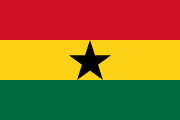 Ghana (Convention People's Party) 1964-1966
Ghana (Convention People's Party) 1964-1966 Guinea (Democratic Party of Guinea) 1958-1984
Guinea (Democratic Party of Guinea) 1958-1984 Guinea-Bissau (African Party for the Independence of Guinea and Cape Verde) 1974-1991
Guinea-Bissau (African Party for the Independence of Guinea and Cape Verde) 1974-1991 Kenya (Kenya African National Union) 1982-1990
Kenya (Kenya African National Union) 1982-1990 Liberia (True Whig Party) 1878-1980
Liberia (True Whig Party) 1878-1980 Madagascar (National Front for the Defence of the Revolution) 1976-1989
Madagascar (National Front for the Defence of the Revolution) 1976-1989 Malawi (Malawi Congress Party) 1966-1993
Malawi (Malawi Congress Party) 1966-1993 Mali (Sudanese Union-African Democratic Rally) 1960-1968, (Democratic Union of the Malian People) 1979-1991
Mali (Sudanese Union-African Democratic Rally) 1960-1968, (Democratic Union of the Malian People) 1979-1991 Mauritania (Mauritanian People's Party) 1961-1978
Mauritania (Mauritanian People's Party) 1961-1978 Mozambique (Mozambique Liberation Front) 1975-1990
Mozambique (Mozambique Liberation Front) 1975-1990 Niger (Nigerien Progressive Party-African Democratic Rally) 1960-1974, (National Movement for a Developing Society) 1989-1991
Niger (Nigerien Progressive Party-African Democratic Rally) 1960-1974, (National Movement for a Developing Society) 1989-1991 Rwanda (Democratic Republican Party-Party of the Hutu Emancipation Movement) 1965-1973, (National Revolutionary Movement for Development) 1978-1991
Rwanda (Democratic Republican Party-Party of the Hutu Emancipation Movement) 1965-1973, (National Revolutionary Movement for Development) 1978-1991 São Tomé and Príncipe (Movement for the Liberation of São Tomé and Príncipe) 1975-1990
São Tomé and Príncipe (Movement for the Liberation of São Tomé and Príncipe) 1975-1990 Senegal (Socialist Party) 1966-1974
Senegal (Socialist Party) 1966-1974 Seychelles (Seychelles People's Progressive Front) 1979-1991
Seychelles (Seychelles People's Progressive Front) 1979-1991 Sierra Leone (All People's Congress) 1978-1991
Sierra Leone (All People's Congress) 1978-1991 Somalia (Somali Revolutionary Socialist Party) 1976-1991
Somalia (Somali Revolutionary Socialist Party) 1976-1991 Sudan (Sudanese Socialist Union) 1971-1985
Sudan (Sudanese Socialist Union) 1971-1985 Tanzania (Tanganyika African National Union) 1965-1975; Zanzibar (Afro-Shirazi Party 1965-1992; TANU and ASP merged to form (Chama Cha Mapinduzi) 1975-1992
Tanzania (Tanganyika African National Union) 1965-1975; Zanzibar (Afro-Shirazi Party 1965-1992; TANU and ASP merged to form (Chama Cha Mapinduzi) 1975-1992 Togo (Rally of the Togolese People) 1969-1991
Togo (Rally of the Togolese People) 1969-1991 Uganda (National Resistance Movement/Party) 1986-2005
Uganda (National Resistance Movement/Party) 1986-2005 Upper Volta (Voltaic Democratic Union-African Democratic Rally) 1960-1966
Upper Volta (Voltaic Democratic Union-African Democratic Rally) 1960-1966 Zambia (United National Independence Party) 1972-1990
Zambia (United National Independence Party) 1972-1990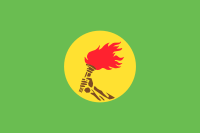 Zaire (Popular Movement of the Revolution) 1967-1990
Zaire (Popular Movement of the Revolution) 1967-1990
- Middle Eastern and North African governments such as:
- The former Soviet Union, the Warsaw Pact, and some of its neighbors were ruled by Communist parties.
 Afghanistan (People's Democratic Party of Afghanistan) 1978-1992
Afghanistan (People's Democratic Party of Afghanistan) 1978-1992 Albania (Albanian Party of Labour) 1945-1991
Albania (Albanian Party of Labour) 1945-1991 Bulgaria (Bulgarian Communist Party) 1946-1990
Bulgaria (Bulgarian Communist Party) 1946-1990 Czechoslovakia (Communist Party of Czechoslovakia with minor allied parties Czech National Social Party, Czechoslovak People's Party, Freedom Party (Slovakia) and Party of Slovak Revival) 1948-1989
Czechoslovakia (Communist Party of Czechoslovakia with minor allied parties Czech National Social Party, Czechoslovak People's Party, Freedom Party (Slovakia) and Party of Slovak Revival) 1948-1989 East Germany (Socialist Unity Party of Germany with minor allied parties CDU, DBD, LDPD, NDPD) 1949-1989
East Germany (Socialist Unity Party of Germany with minor allied parties CDU, DBD, LDPD, NDPD) 1949-1989 Hungary (Hungarian Socialist Workers' Party) 1948-1989
Hungary (Hungarian Socialist Workers' Party) 1948-1989 Mongolia (Mongolian People's Revolutionary Party) 1921-1990
Mongolia (Mongolian People's Revolutionary Party) 1921-1990 Poland (Polish United Workers' Party with two minor allied parties SD and ZSL) 1948-1989
Poland (Polish United Workers' Party with two minor allied parties SD and ZSL) 1948-1989 Romania (Romanian Communist Party) 1947-1989
Romania (Romanian Communist Party) 1947-1989 Soviet Union (Communist Party of the Soviet Union) 1922-1991
Soviet Union (Communist Party of the Soviet Union) 1922-1991 Yugoslavia (League of Communists of Yugoslavia) 1945-1990
Yugoslavia (League of Communists of Yugoslavia) 1945-1990
 Afghanistan (National Revolutionary Party) 1975-1978
Afghanistan (National Revolutionary Party) 1975-1978 Austria (Fatherland's Front) 1934-1938
Austria (Fatherland's Front) 1934-1938 Burma (Burma Socialist Programme Party) 1962-1988
Burma (Burma Socialist Programme Party) 1962-1988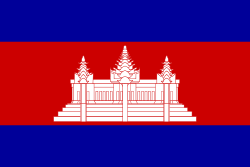 Cambodia (Communist Party of Kampuchea) 1975-79 (not official until September 1977)
Cambodia (Communist Party of Kampuchea) 1975-79 (not official until September 1977) Republic of China (Kuomintang of China), on Mainland China 1928-1949, the mainland and Taiwan 1945-1949, Taiwan only 1949-1987
Republic of China (Kuomintang of China), on Mainland China 1928-1949, the mainland and Taiwan 1945-1949, Taiwan only 1949-1987- Croatia (Ustaše) 1941-1945
- Dominican Republic (Dominican Party) 1930-1961
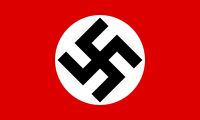 Germany (National Socialist German Workers' Party - Nazi Party) 1933-1945
Germany (National Socialist German Workers' Party - Nazi Party) 1933-1945- Grenada (New Jewel Movement) 1979-1983
- Hungary (Arrow Cross Party) 1944-1945
- Italy (National Fascist Party) 1928-1943
- Japan (Imperial Rule Assistance Association) 1940-1945
- Norway (National Gathering) 1942-1945
- Paraguay (Colorado Party) 1947-1962
- Portugal (National Union) 1930-1974
- Romania (National Renaissance Front) 1938-1940, (Iron Guard) 1940-1941
- Slovak Republic (Slovak People's Party) 1939-1945
- Spain (Spanish Patriotic Union), 1923-1930, and the (National Movement), 1939-1977.
- Turkey (Republican People’s Party),1923-1946.
- Turkmenistan (Democratic Party of Turkmenistan),1991-2008.
Notes
- ↑ Cuba: Elections and Events 1991-2001 Latin American Election Statistics Home
See also
- List of democracy and elections-related topics
- Multi-Party System
- Two-Party System
- Dominant Party System
External links
- Map of One Party States, 1945-95
- Single party states in Africa
- List of One-Party Regimes
- When the State is Ultimate
- Totalitarian Daydreams and Christian Humanism
|
|||||||||||